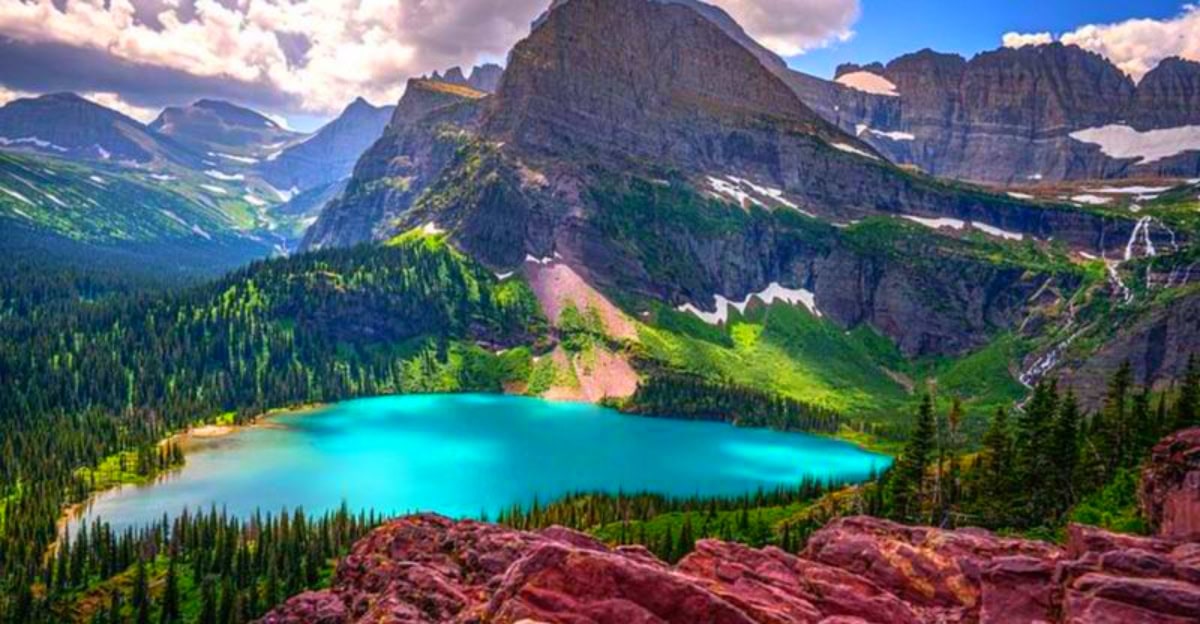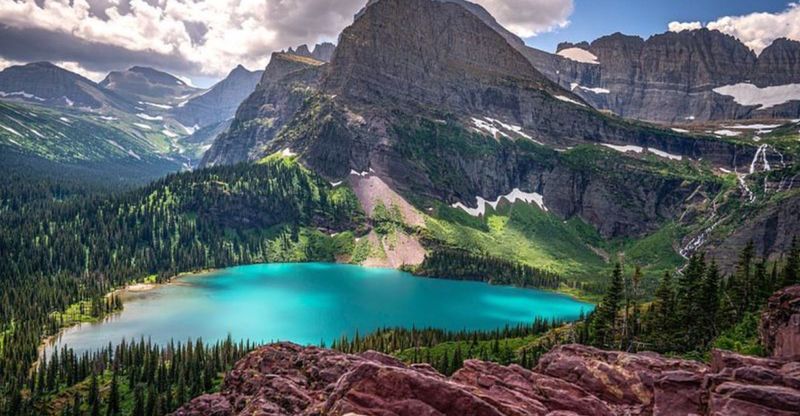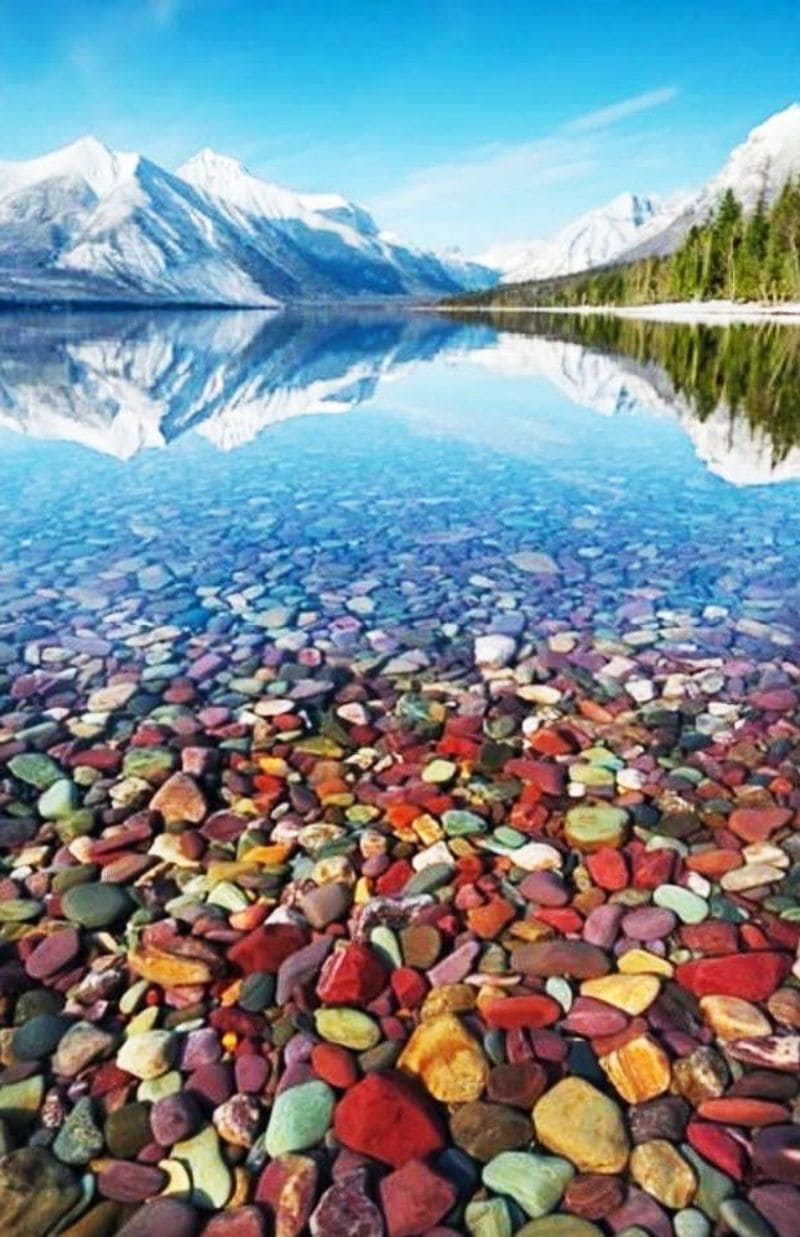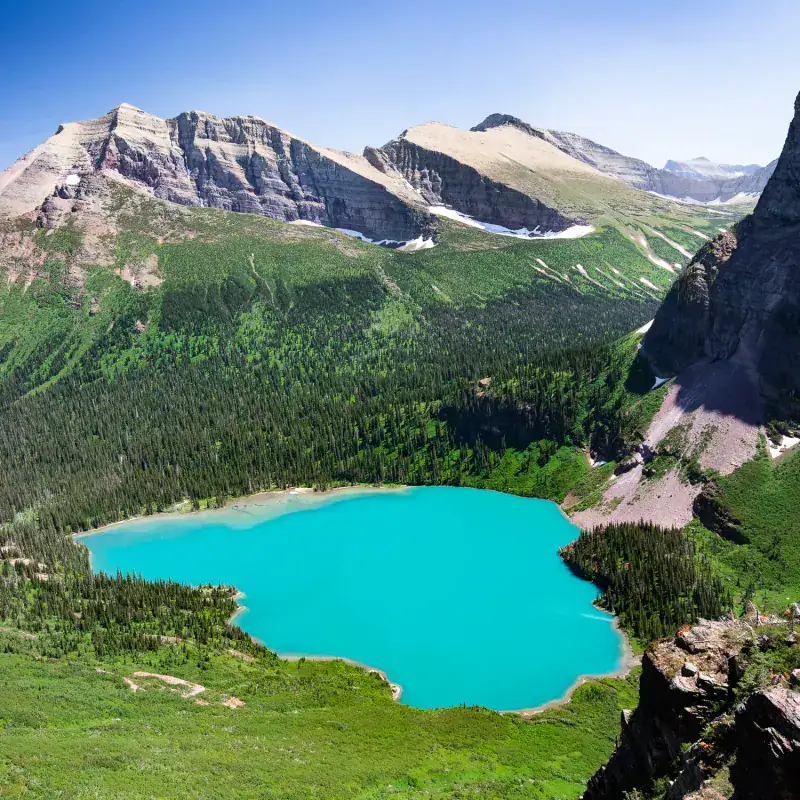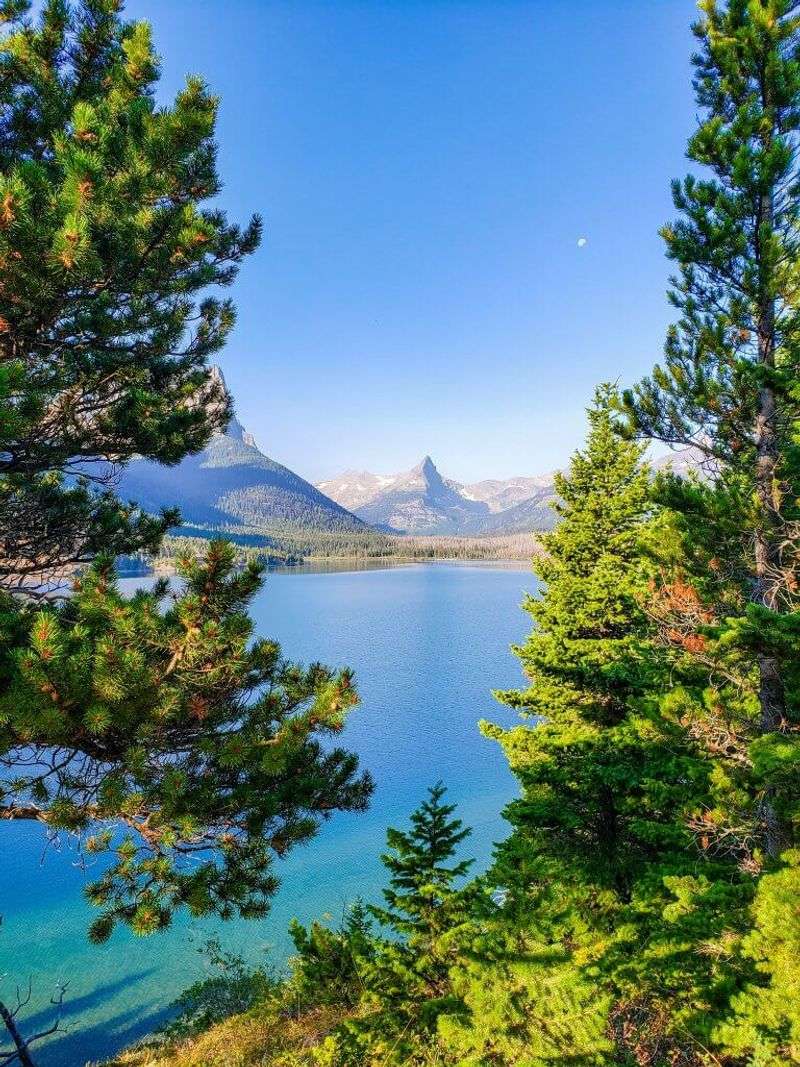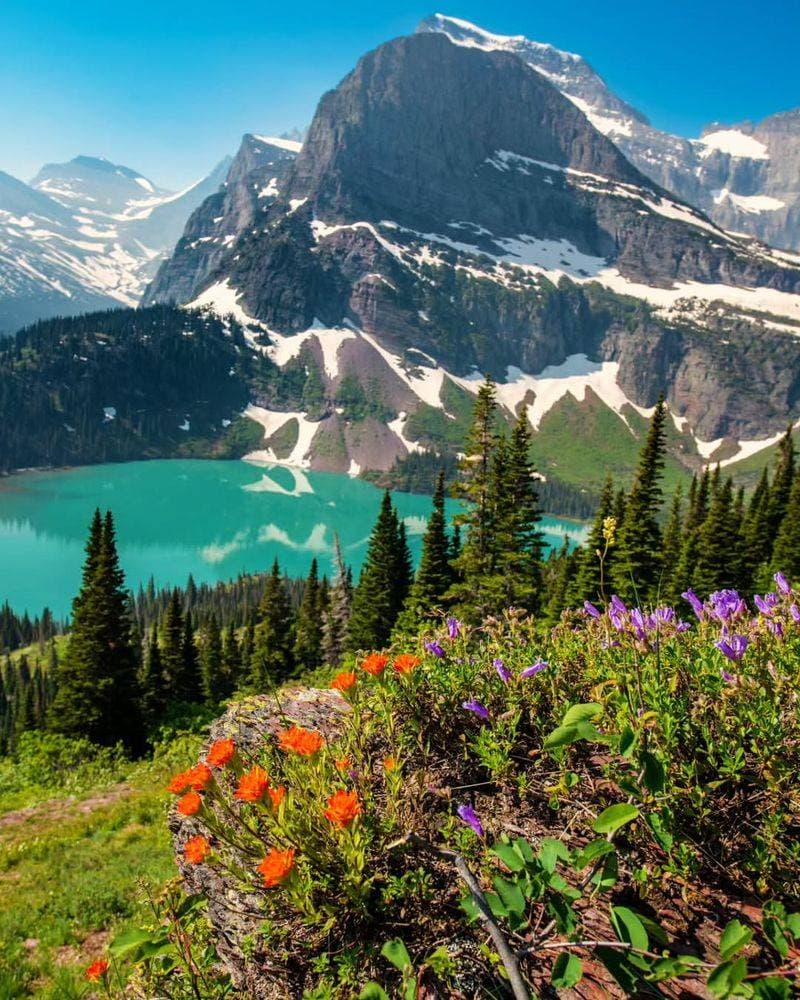Tucked between the charming towns of Kalispell and Whitefish lies West Glacier, Montana – a gateway to some of America’s most surprising natural wonders. This mountain town serves as the entrance to Glacier National Park, home to alpine lakes with waters so vibrantly turquoise they could be mistaken for Caribbean destinations. The unexpected tropical hues amid Montana’s rugged wilderness create a breathtaking contrast that draws visitors from around the world.
The Science Behind the Caribbean-Blue Waters
Those jaw-dropping turquoise waters aren’t just a lucky coincidence – they’re the result of fascinating geological processes unique to glacial regions. When glaciers grind against rock, they create a fine powder called ‘rock flour’ that remains suspended in the meltwater.
Sunlight hitting these tiny particles scatters blue wavelengths more than others, creating that impossible Caribbean-like color that seems so out of place in Montana’s mountains. The colder the water, the more vibrant the color appears – a stunning paradox considering these frigid waters look like tropical paradises.
Each lake displays slightly different hues depending on the specific mineral content of its rock flour. Some shimmer with deep sapphire tones while others glow with an almost neon turquoise intensity that photographers struggle to capture accurately.
Lake McDonald: The Crown Jewel
Stretching over ten miles long and nearly 500 feet deep, Lake McDonald reigns as Glacier National Park’s largest and most accessible turquoise wonder. The Going-to-the-Sun Road hugs its eastern shore, offering countless pullouts where visitors can marvel at waters shifting from crystal clear near the edges to deep turquoise in its depths.
Smooth, multicolored stones line the shoreline – a geological rainbow polished by centuries of glacial movement. Early morning visits reward early risers with mirror-like reflections of surrounding mountains when the lake sits perfectly still before daily winds arrive.
Unlike some park attractions requiring strenuous hikes, Lake McDonald welcomes everyone with easy access points. Visitors can kayak across its surface, fish for native trout, or simply dangle their feet in the refreshingly cold water from one of several beach areas.
Grinnell Lake: The Turquoise Hiking Destination
Hikers seeking the quintessential Caribbean-blue lake experience often set their sights on Grinnell Lake. The moderately challenging 7-mile round-trip trail from Many Glacier Hotel rewards adventurers with increasingly spectacular views with each step forward.
Fed directly by Grinnell Glacier’s meltwater, this lake showcases perhaps the most intense turquoise coloration in the entire park. Mountain goats often dot the surrounding slopes while moose occasionally wade in the shallow sections – wildlife seemingly as mesmerized by the otherworldly waters as human visitors.
The trail crosses several wooden footbridges and passes two smaller lakes before revealing the main attraction. Many hikers pack picnic lunches to enjoy on the rocky beach, allowing ample time to absorb the surreal landscape where Montana’s wilderness meets Caribbean colors in an unlikely alpine setting.
West Glacier: The Perfect Base Camp
Strategically positioned between Kalispell and Whitefish, the small community of West Glacier serves as the ideal headquarters for turquoise lake explorations. This unassuming village transforms each summer from sleepy outpost to vibrant hub of activity without losing its authentic Montana charm.
Local outfitters offer guided lake tours, equipment rentals, and expert advice on current conditions. The historic Belton Chalet, built in 1910 as the park’s first lodge, provides period-appropriate accommodations after days spent lake-hopping. Family-owned restaurants serve huckleberry-infused everything, from pancakes to cocktails, celebrating Montana’s favorite wild berry.
Morning coffee shops buzz with conversations between photographers comparing notes on the best light for capturing those impossible blues. Despite its popularity, West Glacier maintains a refreshing lack of commercial development, preserving the natural experience visitors seek.
Seasonal Magic: When to Experience the Blues
Montana’s Caribbean-colored lakes reveal their most vibrant hues during specific seasonal windows. Late June through early September offers the magic combination of accessibility, comfortable temperatures, and peak color intensity that makes these waters truly shine.
July brings wildflower explosions along lakeshores, creating purple and yellow frames for those turquoise waters. August typically delivers the clearest skies and warmest water temperatures – though ‘warm’ remains relative in glacier-fed lakes where brave swimmers rarely last more than a quick dip!
Early morning visits provide two advantages: fewer crowds and calmer waters that perfectly mirror surrounding peaks. Photographers particularly prize the ‘golden hour’ just after sunrise when morning light illuminates mountain faces while lakes still sit in cool shadow, creating dramatic contrast between azure waters and sunlit peaks.
